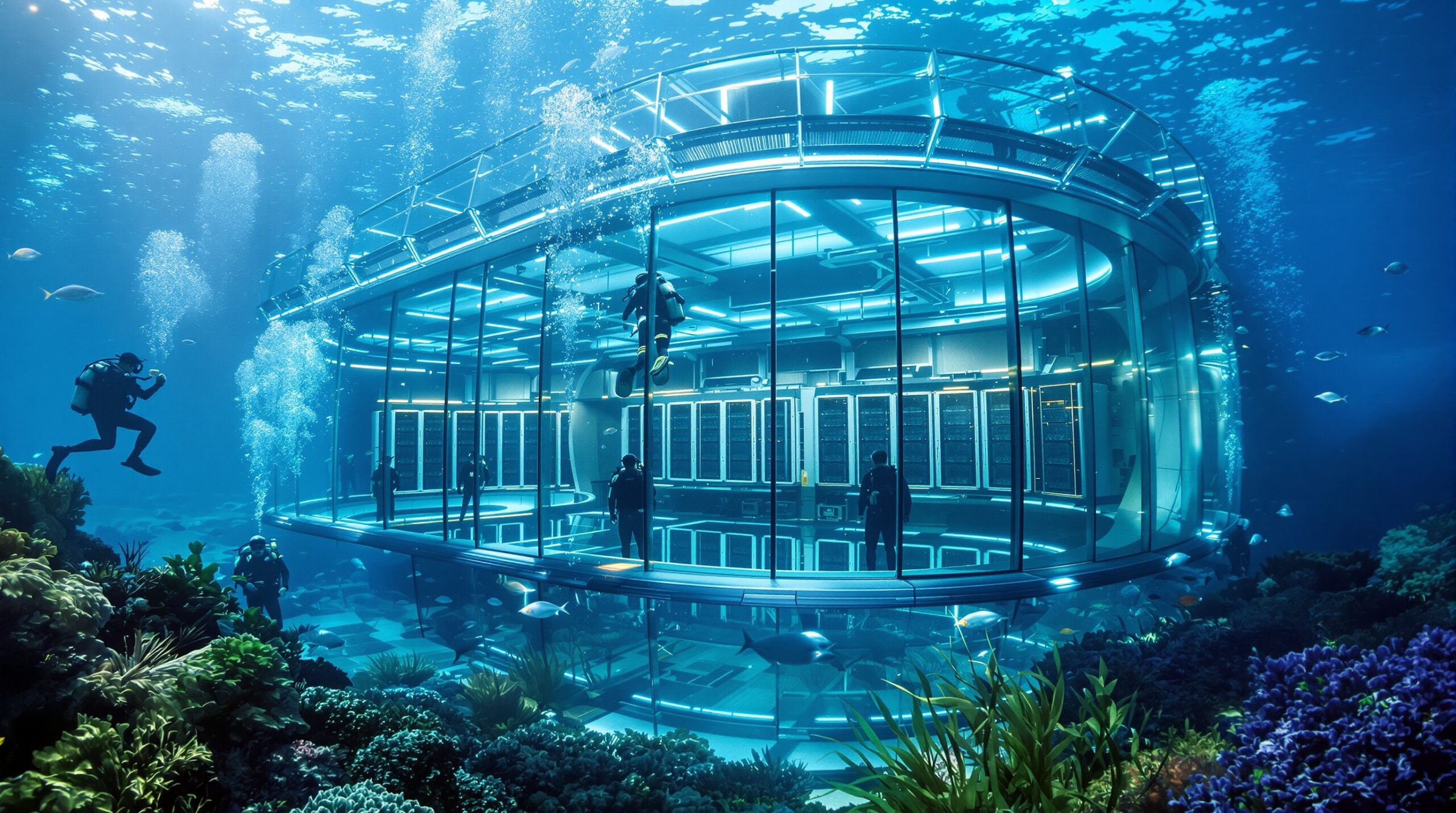Global technology companies face growing demands for energy-efficient computing as data usage and cloud service requirements keep rising. To meet these demands without harming the environment, tech giants are exploring innovative solutions. One of the most promising is deploying underwater data centers that use the ocean’s natural cooling abilities. This approach could reduce both operational costs and the industry’s substantial carbon footprint.
The Challenge of Data Center Cooling
Modern data centers generate considerable heat due to powerful servers running without pause. Effective cooling systems are essential to maintain optimal performance and prevent hardware failure. Traditional air-based cooling systems consume significant amounts of energy, often matching or exceeding server power consumption. The environmental and financial costs of standard cooling methods have become unsustainable for many organizations.
As the digital economy grows, data centers are now responsible for about 1% of global energy usage. Reducing their reliance on electricity-hungry cooling solutions is a priority for industry leaders. The need for sustainable alternatives has driven research and investment toward novel concepts like underwater data centers.
The Underwater Data Center Concept
Underwater data centers operate by enclosing server racks in watertight capsules, then deploying them deep beneath the ocean surface. The cool temperatures of the surrounding seawater help dissipate heat from the hardware efficiently and continuously. Water conducts heat better than air and is available in abundance in the marine environment, making it an ideal cooling medium.
This method eliminates the need for conventional air conditioning units and large cooling towers on land. As a result, it reduces the resources consumed by these infrastructure components. The underwater environment also provides physical isolation from many natural disasters that threaten onshore facilities, such as wildfires, floods, and extreme heat waves.
Microsoft’s Project Natick: Pioneering the Field
Microsoft is a leading company in this emerging field with its Project Natick initiative. Launched in 2015, Project Natick aimed to test the feasibility, performance, and sustainability of underwater data centers. Microsoft researchers deployed a subsea data center off the coast of Scotland’s Orkney Islands in 2018.
The sealed cylindrical vessel contained 12 server racks and operated successfully for two years beneath 36 meters of water. Seawater flowed around the vessel, efficiently wicking away heat as the servers worked. Project Natick’s findings showed that underwater environments could offer reliable cooling and low failure rates compared to traditional land-based centers.
Major Tech Giants Follow Suit
Inspired by Microsoft’s advances, other global technology leaders are exploring underwater data center ventures of their own. Google, Amazon, and Alibaba have all announced pilot projects or research initiatives focused on deploying subsea hardware. These companies recognize the dual benefits of energy savings and enhanced hardware reliability in submerged environments.
For example, Google recently partnered with marine engineering companies to study undersea deployment at scale. Their teams are working to develop robust, modular capsule designs that can withstand pressure, corrosion, and biofouling. Amazon’s cloud division is considering underwater deployments near renewable energy sources such as offshore wind farms, which can power data operations and further reduce carbon emissions.
The Sustainability Benefits of Underwater Cooling
Deploying data centers underwater offers clear advantages in terms of sustainability and climate impact. Ocean-based cooling requires no energy input for ventilation, fans, or chillers. This reduces overall data center energy consumption by up to 40% when compared with conventional facilities.
Because underwater centers rely on passive, natural cooling, they often achieve higher energy efficiency ratings. This efficiency translates directly to reductions in greenhouse gas emissions. It helps technology companies move toward ambitious carbon neutrality targets, which are increasingly demanded by shareholders and regulatory bodies.
Operational and Maintenance Advantages
Submerged capsules are designed for rigorous reliability, minimizing human intervention and exposure to environmental contaminants. Maintenance intervals can be lengthened because the sealed environments keep out dust, moisture, and pollutants that typically degrade equipment. The stable conditions underwater further reduce the risk of hardware malfunction, ensuring continued uptime for critical cloud and enterprise services.
When maintenance is required, robotic systems and sensors monitor capsule health in real time. Advanced diagnostics can flag potential issues for response teams. This approach improves safety and operational efficiency, allowing fewer technicians to oversee larger installations without venturing into hazardous settings.
Challenges and Considerations
Despite the many benefits, deploying underwater data centers presents unique engineering and environmental challenges. Capsules must resist high pressures, saltwater corrosion, and biofouling caused by marine organisms. Ensuring long-term survivability and connectivity with onshore infrastructure requires careful planning and investment.
Concerns about the impact on local ecosystems must also be addressed. Careful site selection and ongoing environmental monitoring can help minimize disruption to marine habitats. Companies are working with oceanographers and regulators to create standards for responsible deployment and operation of subsea centers.
The Future of Underwater Data Centers
As global data demands surge, underwater data centers could become a core feature of the digital infrastructure landscape. The scalability of capsule-based designs allows tech companies to deploy additional capacity rapidly while minimizing environmental impact. Advances in materials science, robotics, and undersea networking will further accelerate adoption as costs decline.
Collaboration will be essential as more organizations enter the field. Sharing best practices can help accelerate innovation while maintaining sensitive marine ecosystems. As governments introduce stricter environmental regulations, the appeal of underwater cooling solutions will only increase.
Conclusion: Innovation Beneath the Waves
Tech giants are redefining the future of data center cooling by turning to the deep sea for sustainable solutions. Underwater data centers offer unparalleled efficiency, reduced maintenance, and significant environmental gains. By harnessing the ocean’s natural cooling power, the technology industry moves closer to achieving its climate goals.
Continued investment and research will address deployment challenges and refine the approach for widespread use. As a result, underwater data centers could emerge as a critical driver of both growth and sustainability in the evolving world of technology.

